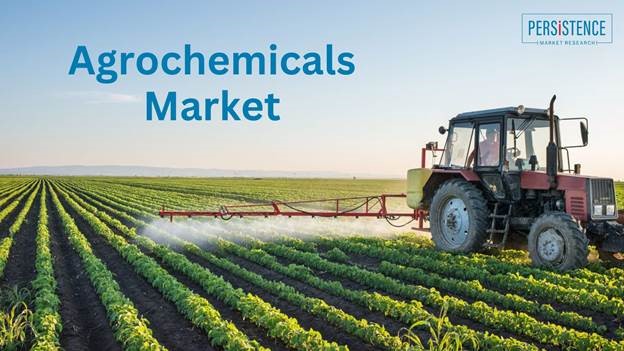The global agrochemicals market has witnessed steady growth over the past decade, driven by factors like population growth, reduced arable land, and demand for higher crop yields. Valued at USD 332 billion in 2031, the market is projected to grow at a CAGR of 4% from 2024 to 2031 as per leading industry analysis firm Persistence Market Research.
However, the market now faces evolving challenges from environmental concerns, regulatory pressures, development of biopesticides, and precision farming practices. As the competitive landscape changes, agrochemical companies work to adapt through M&As, new product innovation, and alignments to sustainability goals.
Key Agrochemicals Market Drivers
The demand for agrochemical products has significantly increased globally due to:
Pressure to Boost Production: With the growing population and decline in arable land, crop yields must expand each year to meet global food requirements. Agrochemicals help boost yield quantity and quality.
Resistance and Pest Issues: Continuous mono-cropping leads to pest resistance and outbreaks damaging harvests, raising demand for new pesticides. Fungal diseases and insect infestations also impact a wider variety of crops now.
Advancements in R&D: Investment in agrochemical R&D by leading companies produces next-gen formulations that are more effective, convenient and versatile for farmers to apply across crops and geographies.
Rising Disposable Incomes: Higher disposable incomes allow farmers, especially across developing regions like Asia Pacific and Latin America, to spend more on crop protection products and fertilizers.
Key Market Challenges
While market drivers remain largely intact, evolving challenges are reshaping industry dynamics:
Regulatory Pressures: Regulatory authorities across North America and Europe in particular pressure agrochemical companies to avoid toxic substances, demonstrate product safety, and support sustainable practices. Registration costs also continue rising.
Biopesticides Growth: Consumer preference is shifting toward sustainably grown produce with lower chemical residue. The rise of biopesticides derived from plants, fungi and other natural materials answers this demand. Globally the biopesticide market is forecast to grow 12% through 2030.
Precision Farming: Precision agriculture leverages data and technology to apply crop inputs and irrigation more optimally. As these practices expand among farms worldwide, precision farming may reduce or shift product usage over time.
Market Outlook and Impacts
Leading agrochemical firms now rethink strategies and portfolios by increasing R&D in advanced sustainable crop technologies, pursuing mergers and acquisitions to access complementary solutions, and implementing enterprise changes to align with environmental best practices to ensure sustained growth.
Bayer CropScience continues to lead the competitive landscape through intensive R&D and consolidation of germplasm resources via acquisition. BASF and Corteva Agriscience (spun off DowDuPont) also actively pursue strategic M&As and licensing deals globally to expand technical capabilities while meeting demand for biopesticides and precision agriculture compatibility. Premier China-based companies continue aggressive development as well to serve the Asia Pacific region and beyond.
While conventional agrochemicals will dominate revenues near-term, sustainable biopesticides and new technologies will capture increasing market share over the long term. More holistic ‘crop solutions’ approaches will blend synthetic and biological crop inputs with technology-driven applications to balance efficacy, yield gains, consumer trends and shifting regulations in this essential global industry.
By combining world-class R&D with sustainability commitments across operations, leading agrochem companies can proactively ensure the overall market stays on course to feed the world responsibly and overcome headwinds introduced by climate change, environmental concerns, and evolving agricultural ecosystems worldwide.








